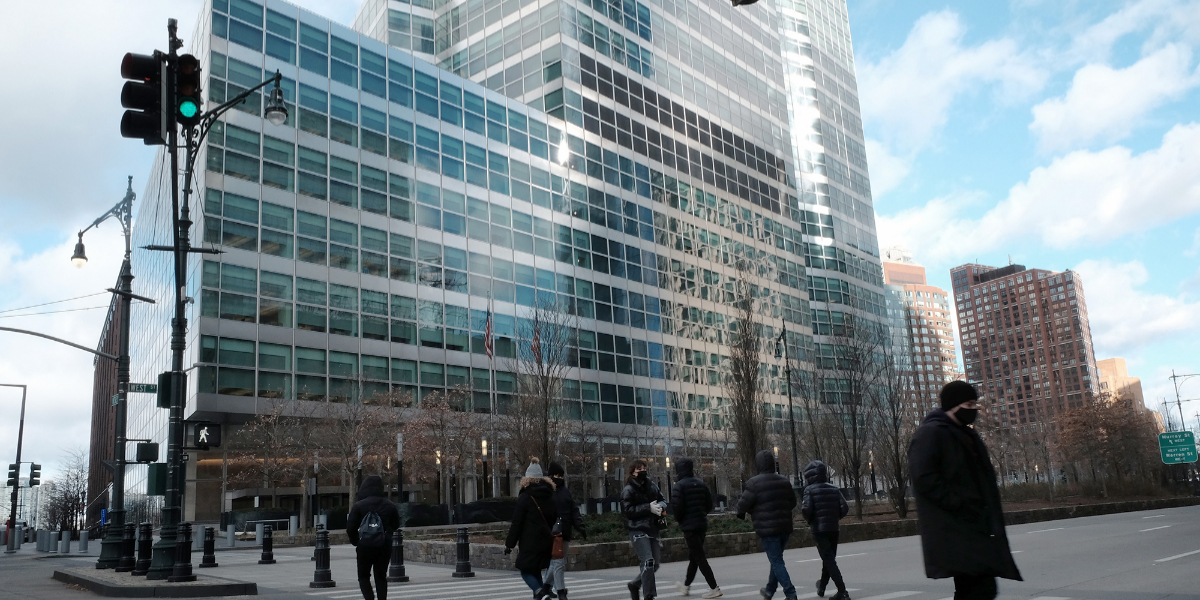Interest rate hikes by the Federal Reserve are expected to improve lending earnings for large banking institutions. Now is the time for the large banks to show investors that they can prosper even if interest rates continue to rise.
This week, JPMorgan Chase (JPM), Wells Fargo (WFC), Citigroup (C), Goldman Sachs (GS), and Morgan Stanley (MS) will all release their first-quarter results.BlackRock (BLK) and State Street (STT), as well as regional banking behemoths US Bancorp (USB) and PNC (PNC), and internet lender Ally Financial (ALLY), are all expected to report their latest earnings.
Financial equities are expected to benefit from higher interest rates, according to investors. However, it is a difficult calculus. The large banks may suffer if the Fed is serious about tightening monetary policy forcefully.
The Fed is no longer expected to steadily hike rates. Economists agree that a series of quarter-point increases isn’t going to cut it anymore.
In terms of inflation, the Fed is behind the curve. It’s time for a dose of surprise and wonder.
Following a rate cut to zero at the onset of the epidemic in March 2020, the Fed kept rates there until March, when they were ultimately raised to a range of 0.25 percent to 0.5 percent.
Investors are now pricing in a roughly 80% likelihood of a half-point rise at the Fed’s May meeting, and around a 55 percent chance of another half-point boost in June, according to futures trading on the Chicago Mercantile Exchange. A three-quarters-point rate hike to a range of 1.5 percent to 1.75 percent is even more likely, with a likelihood of more than 30%.
Increased interest rates might eat into company profits and increase stock market volatility. Bank profitability might be harmed as well, since a drop on Wall Street could reduce demand for mergers and new stock sales. Deals, initial public offerings, and special purpose acquisition company (SPAC) listings bring in attractive consulting fees for Wall Street behemoths.
The ripple effect of higher rates
A drop in demand for mortgages and other consumer loans could be harmed if the economy slows as a result of significantly higher rates.
Mortgage rates are currently approaching 5%, and longer-term Treasury bonds are expected to rise as well. This week, the 10-year Treasury yield hit a new high of over 2.7 percent, the highest since March 2019.
As a result, any increase in lending profit margins could be counterbalanced by a decrease in loan activity. In a real estate market that has already grown too costly for many Americans, people would be less likely to buy new homes.
Banks may be harmed by the yield curve inversion. Shorter-term bond rates, particularly the 2-year Treasury, have briefly risen higher than 10-year Treasury rates, putting a cap on profits for banks that must pay higher short-term rates on deposits.
“The recent inversion of the curve has been an overhang for bank stocks, with uncertainties regarding revenue growth and credit,” said KBW managing director Christopher McGratty in a first-quarter earnings preview report. He specifically cited “the risk of elevated deposit costs.”
It doesn’t help that an inverted yield curve is a reasonably accurate prediction of a future recession. It goes without saying that if the economy takes a significant downturn, banks will suffer.
All of these concerns are weighing on bank stocks. Investors appear to be more concerned about a future pullback than by the possibility of a short-term increase in loan profits.
The Financial Select Sector SPDR (XLF) and SPDR S&P Regional Banking (KRE) ETFs, which own shares in most of the top banks, are both down this year, along with the larger market.
“Rising inflation and higher interest rates may lead to a US recession. The course of the pandemic may also change consumer behavior as we continue to move to a new normal,” said CFRA bank analyst Kenneth Leon in an earnings preview report.
“US households could be more frugal and conservative with using their credit cards or consumer loans. Uncertainties remain on the outlook for consumer and commercial loan activity as well as investment banking,” he added.




















